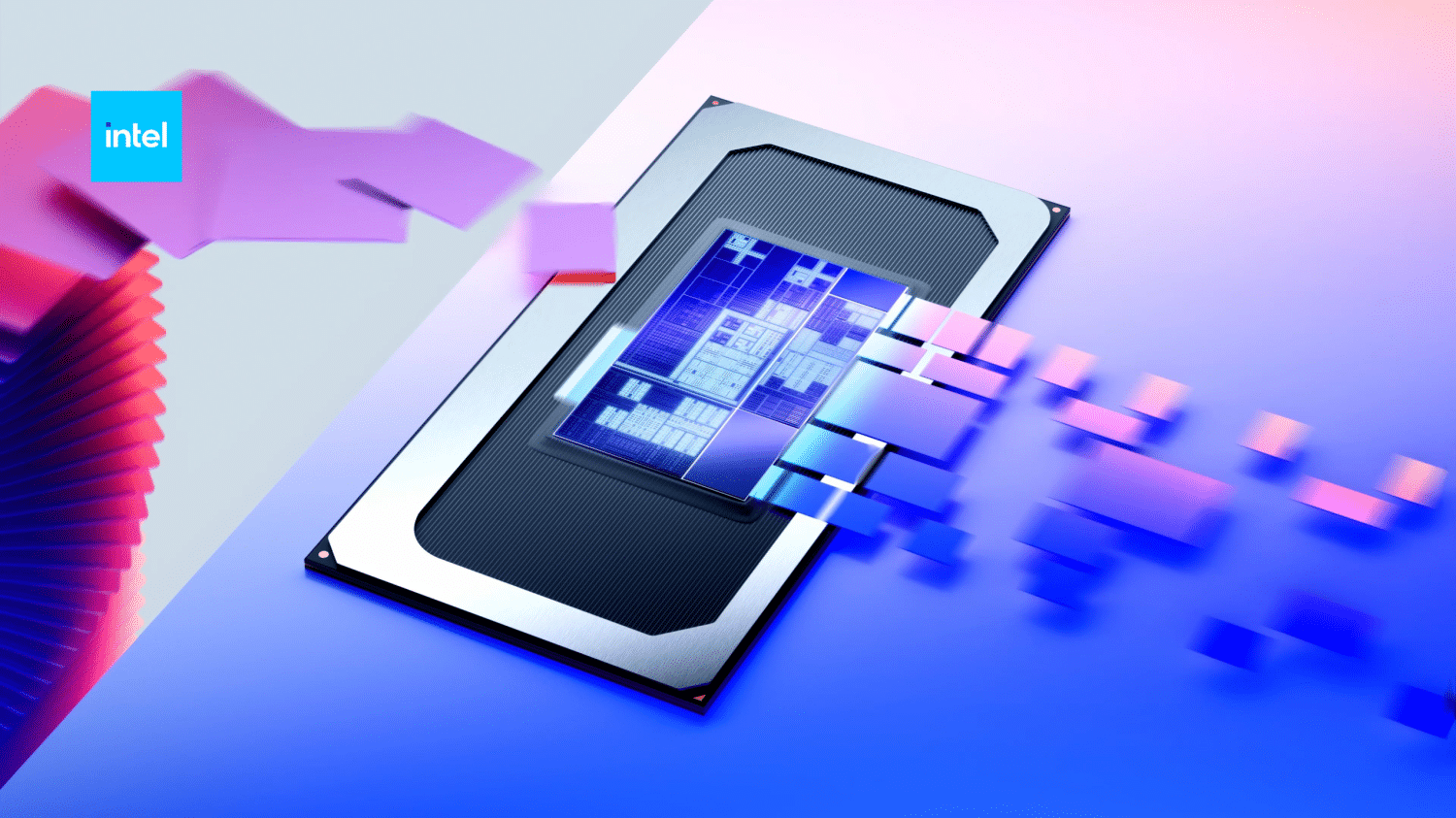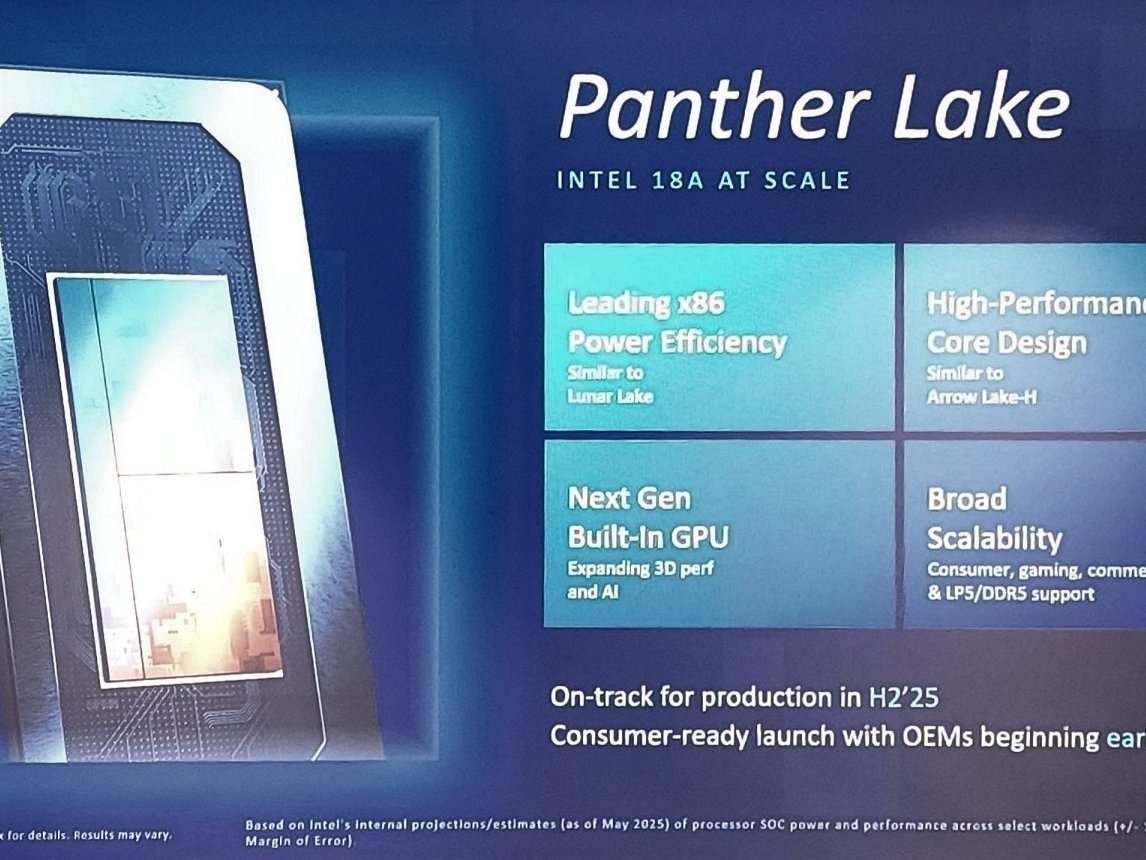The Dawn of a New CPU Era
After years of fierce competition with AMD, Apple, and Qualcomm, Intel is preparing to launch one of its most ambitious CPU architectures to date — Panther Lake, the Core Ultra Series 3, built on the cutting-edge Intel 18A process node.
Expected to arrive in late 2025 to early 2026, Panther Lake represents the culmination of Intel’s multi-year comeback strategy, aiming to reclaim dominance in CPU performance, efficiency, and AI integration.
As revealed at Intel’s Tech Tour 2025 event, this platform promises not just an incremental improvement, but a foundational leap in how CPUs are designed, fabricated, and optimized for the next era of computing.
What Is Intel Panther Lake?
Panther Lake is the successor to Arrow Lake and the third-generation chip in Intel’s “Core Ultra” lineup. It’s designed to deliver breakthrough performance across:
-
Consumer laptops and desktops
-
Gaming PCs and workstations
-
AI-enhanced ultrabooks
-
Edge and enterprise compute environments
The architecture will debut Intel’s 18A process node, an advanced lithography technology that marks Intel’s return to manufacturing leadership. The “A” in 18A refers to angstroms (1 angstrom = 0.1 nanometers), placing this process node around 1.8 nanometers — one of the most advanced in the world.
The Intel 18A Process: A Game-Changer
Intel’s 18A process is the crown jewel of its roadmap, representing the company’s biggest node leap in decades.
Key innovations include:
-
RibbonFET Transistors (Gate-All-Around Design)
-
Unlike FinFETs used since 2011, RibbonFET uses stacked nanosheets to improve control over current flow.
-
Benefits include lower power draw, higher clock speeds, and reduced leakage.
-
-
PowerVia Backside Power Delivery
-
Power routing moves to the backside of the wafer, separating it from data signal layers.
-
This improves signal integrity and efficiency while reducing power congestion.
-
-
Extreme Ultraviolet (EUV) Lithography
-
Intel’s partnership with ASML allows precise patterning at atomic scales, increasing transistor density.
-
-
Performance per Watt Breakthroughs
-
Intel claims up to 50% higher efficiency versus Arrow Lake, with similar or better peak performance.
-
Combined, these innovations put Intel’s 18A process ahead of TSMC’s N2 node in some metrics, marking a return to manufacturing competitiveness.
Architecture Overview: What’s New in Panther Lake
Intel Panther Lake continues the hybrid architecture introduced with Alder Lake — blending Performance (P) cores and Efficiency (E) cores — but reimagined for the AI era.
1. New Core Designs (Lion Cove & Skymont+)
-
P-Cores (Lion Cove):
-
Designed for high-frequency, single-threaded performance.
-
Expected up to 20–25% IPC (instructions per clock) gains over Arrow Lake.
-
-
E-Cores (Skymont+):
-
Built for power efficiency and multitasking scalability.
-
Improved cache, latency, and per-core scheduling performance.
-
Together, these core types offer smarter task distribution, balancing performance and power dynamically.
2. Expanded AI Capabilities (NPU 2.0)
Intel’s Neural Processing Unit (NPU) receives a massive upgrade.
-
Supports local AI workloads like image enhancement, voice recognition, and background rendering — without cloud dependence.
-
Expected AI throughput up to 2x that of Meteor Lake and Arrow Lake NPUs.
-
Ideal for Windows Copilot+, Adobe AI tools, and enterprise productivity apps.
This brings Intel in direct competition with Apple’s Neural Engine and Qualcomm’s Hexagon NPU.
3. Next-Generation GPU (Xe3-LPG Architecture)
-
The integrated GPU features 12 Xe3 GPU cores (up from 8–10 in previous generations).
-
Support for hardware-based ray tracing, XeSS upscaling, and AV1/HEVC encoding.
-
Enhanced compatibility with DirectX 12 Ultimate, Vulkan, and OpenCL.
-
Delivering up to 2x graphics performance compared to Arrow Lake’s iGPU.
Panther Lake will close the gap between integrated and discrete GPU performance, particularly in laptops.
4. Unified Memory & Bandwidth Upgrades
-
Native support for LPDDR6 (up to 8800 MT/s) and DDR6 (up to 9600 MT/s) memory.
-
Improved memory controller latency and multi-channel optimization.
-
These upgrades dramatically improve data throughput for AI, gaming, and multimedia workloads.
5. I/O and Connectivity Enhancements
-
PCIe 6.0 & Thunderbolt 6 support for ultra-fast data transfer.
-
Integrated Wi-Fi 7 & Bluetooth 5.4 modules.
-
Upgraded power management enabling better battery efficiency on mobile platforms.
Performance Expectations
Intel hasn’t released final benchmark data yet, but early projections from internal leaks and developer testing suggest:
| Category | Improvement vs Arrow Lake |
|---|---|
| CPU Performance | +20–25% (P-cores) |
| AI Compute (NPU) | +100% |
| Integrated GPU | +90–100% |
| Memory Bandwidth | +40% |
| Efficiency | +50% (per watt) |
In real-world use, this translates to:
-
Faster content creation (video editing, rendering).
-
Longer battery life in laptops.
-
Better frame rates in gaming on integrated graphics.
-
Lower thermal output, making ultra-thin designs more viable.
Platform and Compatibility
Panther Lake will introduce a new socket and platform generation.
-
Desktop Socket: LGA 1851 (new generation, possibly compatible with Arrow Lake motherboards via BIOS).
-
Laptop Platform: Panther Lake-P and Panther Lake-U variants for thin-and-light and performance laptops.
-
Chipsets: Expected new Intel 800 series with PCIe 6.0 lanes and expanded USB4 support.
Intel is also emphasizing modular design, meaning SoCs will integrate compute, GPU, NPU, and I/O tiles — assembled using Intel’s Foveros 3D packaging. This tile-based approach enables flexible product scaling across desktop, mobile, and workstation platforms.
Competing Technologies
AMD’s Response: Zen 6 “Morpheus”
AMD’s Zen 6 architecture, built on TSMC’s 2 nm process, is Intel’s closest rival. While AMD may still hold the edge in core density and multi-thread performance, Intel’s integration of AI and efficiency improvements could close that gap.
Apple and Qualcomm Threats
Apple’s M5 and Qualcomm’s Snapdragon X2 Elite chips (both on 3 nm nodes) are redefining the laptop landscape with efficiency and AI capabilities. Panther Lake aims to outperform them in sustained performance and cross-platform flexibility (Windows, Linux, ChromeOS).
Energy Efficiency and Sustainability
Panther Lake’s 18A process is not only faster — it’s greener.
-
Lower power draw under load (thanks to PowerVia).
-
Smaller die sizes mean better wafer utilization.
-
Adaptive energy profiles based on workload predictability.
-
Improved cooling efficiency — enabling thinner, quieter systems.
This aligns with Intel’s broader sustainability goals to achieve net-zero emissions by 2040 and reduce overall manufacturing carbon output.
Release Timeline and Availability
| Milestone | Estimated Date |
|---|---|
| Engineering samples | Q1 2025 |
| OEM sampling | Q3 2025 |
| Launch announcement | Q4 2025 |
| Retail availability | Early 2026 |
Panther Lake CPUs will debut first in premium ultrabooks and AI PCs, followed by desktop versions. Expect major OEMs like Dell, Lenovo, HP, and ASUS to announce their first Panther Lake systems at CES 2026.
Why Panther Lake Matters for the Future
-
AI-First Computing: Intel is redesigning CPUs not just for performance, but for AI-native tasks — making NPUs as central as CPUs and GPUs.
-
Process Leadership Comeback: After years of lagging behind TSMC and Samsung, the 18A process marks Intel’s return to manufacturing innovation.
-
Platform Convergence: The same tile-based foundation can power everything from ultrabooks to cloud servers.
-
Ecosystem Refresh: New chipsets, faster memory, and better I/O will fuel a new wave of PC upgrades.
-
Sustainability: Efficiency and modularity align with the industry’s shift toward energy-conscious design.
Intel’s Comeback Is Real
With Panther Lake, Intel isn’t just making a new CPU — it’s signaling the beginning of a new chapter in computing.
By combining its groundbreaking 18A process, advanced hybrid architecture, AI acceleration, and next-gen graphics, Intel aims to deliver not only raw power but also smarter, greener, and more efficient computing experiences.
If the company delivers on its promises, Panther Lake could become the defining architecture of mid-decade PCs — the chip that finally puts Intel back on top in both performance and innovation.
As 2026 approaches, one thing is certain: the future of CPUs will be measured in angstroms — and Intel plans to lead that future.




